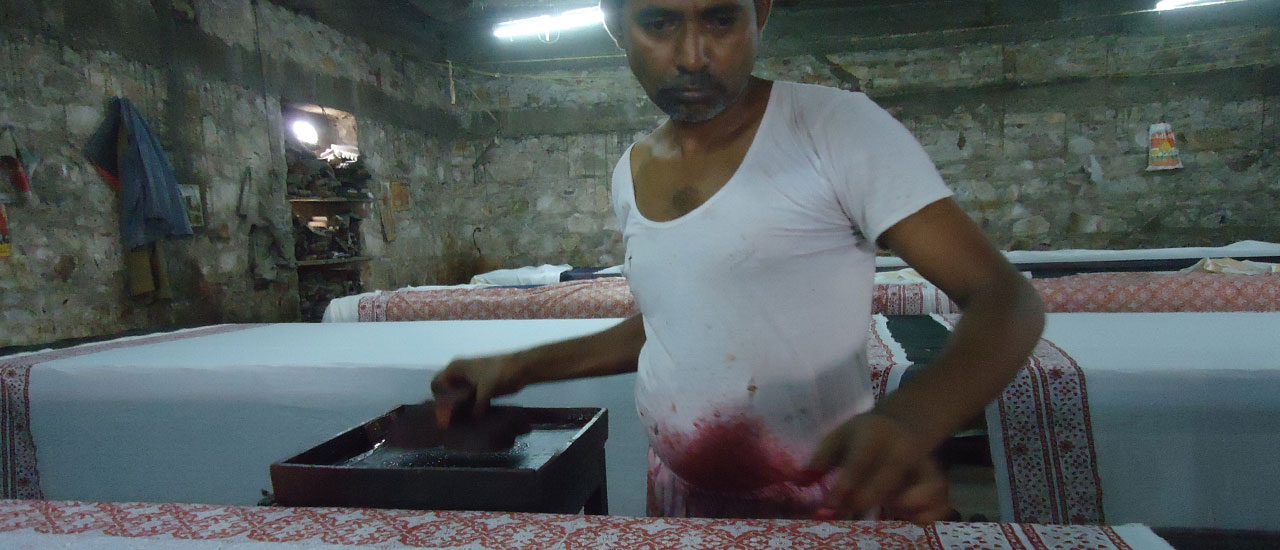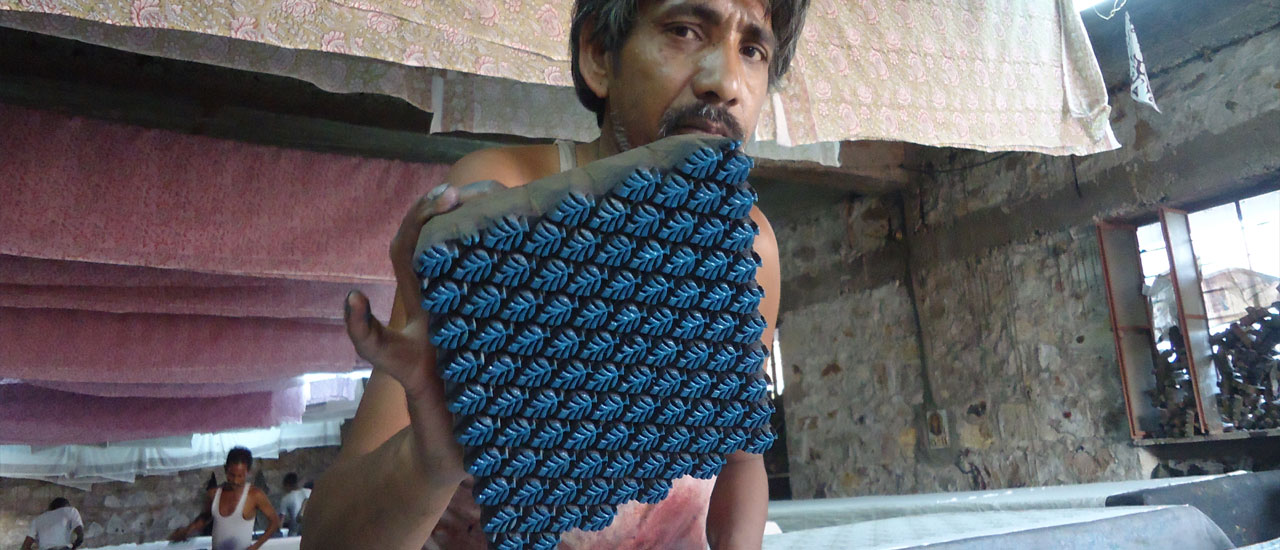
Block print is furious this season in decoration. Cushions, throws and other upholstery textiles are adorned with traditional and ethnic motifs, printed by hand on a block of wood. Where does this printing technique come from? What is it? We take a look.
While modern technologies has renewed printing techniques, an almost antique process returns to the front of the scene: the block print or print block . Piece of carved and hand-carved wood, ink of plant origin, natural textile ... With block printing, it is a question of back to the natural, craft and colorization of the manual gesture. And who says manual, says imperfection. A textile printed on a block of wood has that little flawed and cracked side that brings authenticity to an interior decoration. The mixing of styles is the keystone of a successful decoration, we associate block print pieces, rather ethnic influences, to plain textiles to better highlight the richness of this Indian artisan impression.
The origins of the block print

It is in India - and more precisely in the North of India - that the block printing technique has emerged. It certainly dates from the fourteenth century. Nevertheless, its origin could go back to -2,000 years before Christ. It is to say if it is old! In the sixteenth century, we find its trace on the Indian reported in Europe, very present in decoration, furniture and clothing.
In the nineteenth century, while India was a British colony, manual weaving and printing techniques were somewhat set aside for more industrial manufacture. It was after the independence of India in 1947 that we witnessed a return to craftsmanship and block printing .
Then in the years 1960-1970, in full wave hippie, this technique of printing textile knows a second youth. The traditional Indian designs affixed with natural dyes of plant origin are refreshed by the designers: the patterns are reviewed and enlarged, printed with new colors, integrating more easily into the world of fashion and decoration. .
Technique Of Block Printing

Step 1- The craftsman sculpts the wood around heavy masses to begin, leaving the work finer and more delicate for the end so as to avoid any risk of damaging the pattern when cutting. Once completed, the block presents the sculpture on a flat relief and reveals the pattern drawn earlier.
Step 2- To print the pattern on the fabric, the artisan craftsman applies the color to the block and presses it firmly and steadily on the canvas, ensuring a good impression by smacking it smartly on the back with a wooden mallet. The second impression is made in the same way, the printer taking care to adapt exactly to the first. To make sure of this, he can help himself with markings on the corners of the blocks which are arranged so that, when those on the right side or on the top of the block fall on those on the left side or on the bottom of the block. previous impression, the two prints meet exactly and allow to continue the pattern without interruption. Each subsequent print is performed in exactly the same way until the length of fabric is fully printed.
Step 3- If the pattern contains several colors, the colors must be printed one by one by observing a drying time between the application of each color.
Block printing is a slow manual method. However, it adds a real artistic touch to each printed product. Some patterns and combinations as well as this artistic touch will not be achievable in any other textile printing method.
It is also an ecological printing technique since this technique uses no energy except that of the Man. Also note that the inks used are water based.
How to maintain a textile printing block?

For cleaning a textile printed with the block, will be preferred a manual wash at 30 ° C . Over time and washes, the pattern always faded a little, it's normal: the fabrics decorated with block print have this characteristic of products that age well, slowly but surely.
Why Hand Block Printed Patchwork Tote Bags Are the New Everyday Essential
December 12th, 2025How to Wash and Care for Block Printed Fabrics the Right Way
November 25th, 2025How to Choose the Right Hand Block Printed Dohar for Your Bedroom Décor
November 21st, 2025